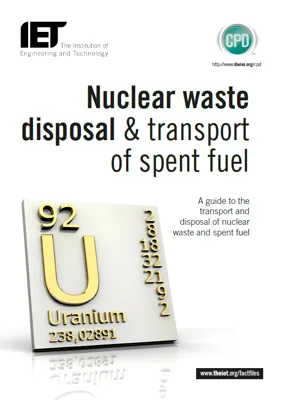Nuclear waste disposal and transport of spent fuel

Radioactive waste arises from many sources, including medical and industrial activities, as well as power stations and fuel reprocessing. The waste can be in a gaseous, liquid or solid state, but the most important factor regarding its disposal is the level of radiation emitted by it. This has implications for the temperature of the waste materials; if the level is high, then the waste will generate heat.
The other important factors are the half-lives of the isotopes forming the waste and the type of radiation emitted. A highly radioactive material with a half-life of seconds only requires a minimal delay period before it can be safely discharged into the environment whereas many radioactive elements have half-lives of several thousands of years and require isolation for long periods.
